Understanding Causes of Nipple Pain in Men
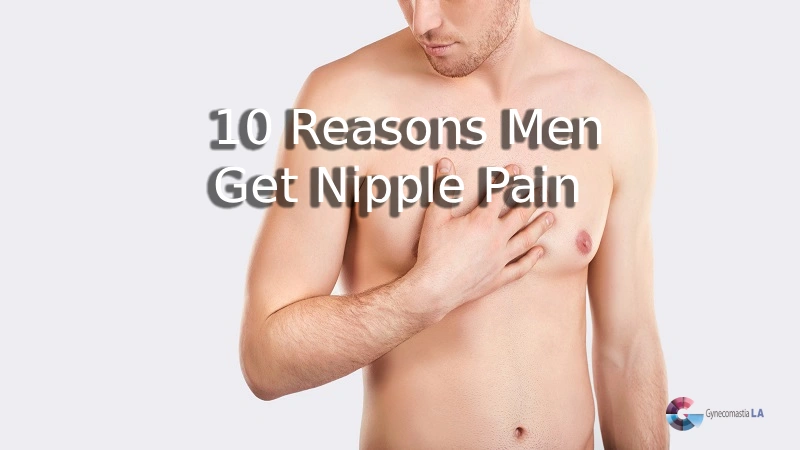
Pain in the male nipple can be a symptom that is inherently worrisome. While the vast majority of underlying causes are benign and treatable, some require immediate evaluation from a physician. In what follows, I summarize the best evidence-based causes, their diagnosis, and practical management course, including what a specialist clinic like GynecomastiaLA diagnoses and treats these problems.
Quick overview: nipple pain (mastalgia, localized nipple tenderness, or burning/aching at the nipple/areola) can come from glandular breast problems (eg, gynecomastia), skin conditions, infection, trauma or friction, medication or hormonal effects, referred chest-wall pain, and rarely malignant disease. The evaluation is tailored to the history and exam.
Why do my Nipples Hurt When Touched not Pregnant?
1) Gynecomastia (benign glandular breast tissue enlargement)
Why it hurts: Gynecomastia is growth of glandular breast tissue in males due to a relative increase in estrogen effect or reduced androgen action. When the glandular tissue enlarges it can be tender especially during times of hormonal change (adolescence) or with rapid growth.
How we diagnose it: physical exam (palpable firm tissue under the nipple), hormone testing when indicated, and ultrasound if the clinical picture is unclear.
Typical management: if hormonal or medication-related, address the trigger; short-term pain control (NSAIDs) and monitoring are often appropriate. Persistent, bothersome gynecomastia (or asymmetry/large volume) can be treated surgically (liposuction ± direct excision) with excellent results, services available at specialist centers.
2) Medication- or Substance-Related Causes
Why it hurts: Several drugs and exogenous substances can cause breast tenderness by altering hormone balance or provoking glandular change. Examples include certain anti-androgens, estrogens, some antipsychotics, spironolactone, and anabolic-androgenic steroids. Prescription and over-the-counter substances (including recreational drugs) are important to review.
What to do: review current and recent medications with your clinician. If a medication is the likely cause, your doctor may suggest alternatives or a period of observation; symptomatic cases sometimes improve when the offending agent is stopped.
3) Infection and Inflammatory Mastitis / Abscess
Why it hurts: Although classically associated with lactation in women, men can get breast infections (mastitis) or abscesses, causing localized pain, swelling, redness, and sometimes systemic symptoms. Nipple pain with warmth, redness, or drainage suggests infection.
Diagnosis & treatment: clinical exam and ultrasound (to detect abscess). Treatment typically includes antibiotics and, when an abscess is present, drainage. Early treatment prevents deeper infection and complications.
4) Nipple Dermatitis, Eczema, Contact Allergy
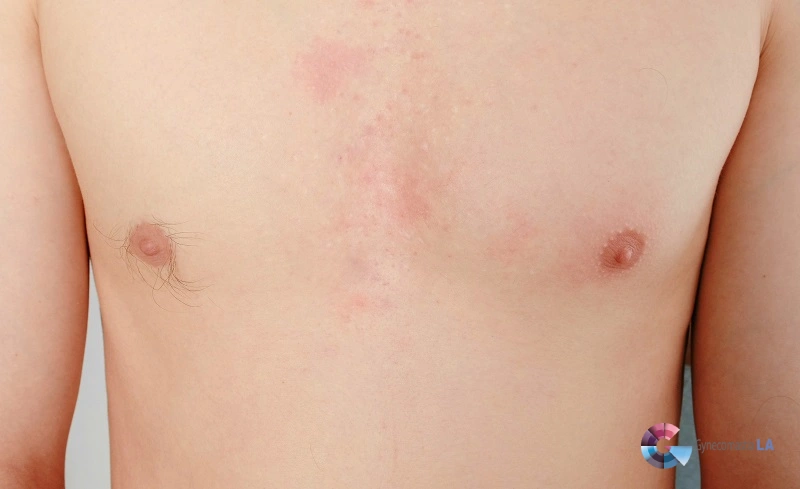
Why it hurts: Irritation or allergic contact dermatitis (from soaps, topical creams, clothing dyes, or perspiration) produces itching, burning, flaking, or rawness of the nipple/areola, often painful when severe. Atopic eczema can also involve the nipple.
Management: identify and avoid the trigger, topical corticosteroids for short courses, emollients, and dermatology referral if recurrent or diagnostic uncertainty exists.
5) Paget Disease / Male Breast Cancer (rare but critical to rule out)
Why it hurts: Nipple pain with persistent crusting, bleeding, bloody discharge, or a suspicious lump should raise concern for Paget disease of the nipple or male breast cancer. Male breast cancer is rare, but when present it can cause nipple changes and painful or non-painful lumps — prompt evaluation is essential.
When to act: Any persistent nipple bleeding, unilateral persistent nipple crusting/erosion, or a palpable fixed mass requires immediate clinical assessment, breast imaging (diagnostic mammogram/ultrasound), and possible biopsy.
6) Trauma, Friction & Exercise-Related Irritation
Why it hurts: Direct trauma (blunt impact), repetitive friction (eg, running without adequate padding), or vigorous sexual activity can cause localized pain, bruising, or superficial lesions of the nipple. Runners may develop chafing and rawness from repetitive rubbing.
Management: rest, topical barrier ointments (petrolatum), protective clothing, and time. If a bruise or lump persists beyond several weeks, have it reviewed.
7) Hidradenitis Suppurativa and Other Follicular/Apocrine Disorders
Why it hurts: Hidradenitis suppurativa (HS) causes painful inflammatory nodules in areas with apocrine glands including around the chest and inframammary regions. Lesions near the areola can cause localized nipple pain and recurrent abscessing.
Management: dermatology collaboration for medical therapies (antibiotics, hormone therapies, biologics) and surgical management for chronic disease.
8) Neuropathic or Referred Chest-Wall Pain (eg, costochondritis)
Why it hurts: Not all nipple pain arises in breast tissue. Costochondritis (inflammation of rib cartilage) or intercostal neuralgia can present as localized chest or nipple-area pain. Post-herpetic neuralgia (after shingles) can also affect the nipple distribution and cause burning pain.
How to distinguish: neuropathic pain often has burning, electric quality and may follow a nerve distribution; muscle/joint pain is reproducible with palpation or movement. Treatment is directed to the underlying cause (NSAIDs, physical therapy, neuropathic agents).
9) Ductal Problems and Intraductal Lesions
Why it hurts: Blockage, ductal ectasia, or rare benign intraductal lesions can cause localized discharge, tenderness or intermittent pain. Although more common in women, men can have ductal pathology that causes nipple symptoms.
Diagnosis & treatment: targeted imaging (ultrasound, sometimes ductogram) and, if needed, surgical exploration or excision of a symptomatic ductal lesion.
10) Systemic Endocrine or Metabolic Conditions
Why it hurts: Systemic conditions that alter hormones — liver disease (cirrhosis), testicular disorders, thyroid disease, or tumors that secrete hormones — can lead to gynecomastia and associated tenderness. A small subset of patients with endocrine disorders present with nipple pain as part of glandular enlargement.
Workup: targeted blood tests (testosterone, estradiol, liver/renal panels, hCG, prolactin) when history or exam suggests systemic disease.
Evaluation Of Nipple Pain At GynecomastiaLA
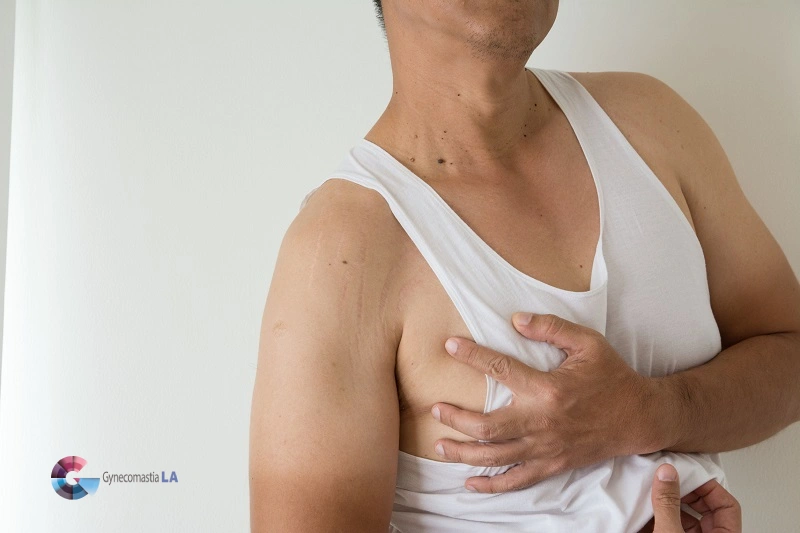
A structured evaluation quickly separates benign from urgent causes and directs appropriate treatment:
Comprehensive history — onset, duration, uni- vs bilateral, associated discharge or skin change, medication/recreational drug use, recent trauma, systemic symptoms (fever, weight loss), and risk factors (family history of male breast cancer, Klinefelter syndrome).
Focused physical exam — palpation of the nipple and underlying tissue, skin inspection, axillary node check, and reproducibility testing for chest-wall pain.
Point-of-care imaging — diagnostic ultrasound is often the first imaging test used to distinguish solid tissue, fat, fluid collections (such as abscesses), or suspicious masses. Mammography or targeted views are used when malignancy is a concern.
Laboratory workup when indicated — hormone panels, liver/renal function, and tumor markers in select cases.
Biopsy — reserved for suspicious lesions or non-resolving skin/ductal abnormalities.
Treatment Nipple Pain Approaches (tailored to cause)
Suspected malignancy: expedited imaging, biopsy, and oncologic referral. Early detection is critica
Gynecomastia-related tenderness: conservative measures (observation, stop offending medications), medical therapy in select cases, or definitive surgery (liposuction ± open excision of gland) for persistent symptomatic or cosmetic concerns.
Infection / abscess: antibiotics ± drainage. Prompt treatment avoids spread.
Dermatitis / contact allergy: topical corticosteroids and trigger avoidance; dermatology referral for chronic disease.
Neuropathic / chest-wall pain: analgesics, neuropathic agents, or physical therapy depending on etiology.
When to Seek Urgent Care?
Seek prompt evaluation if you have:
Persistent pain despite conservative care or unclear diagnosis.
New, persistent unilateral nipple pain with skin breakdown, bleeding, bloody or purulent discharge.
A rapidly growing, fixed lump or tender mass.
Systemic symptoms with breast pain (fever, spreading redness) suggesting infection/abscess.
How GynecomastiaLA Can Help? (Los Angeles area expertise)
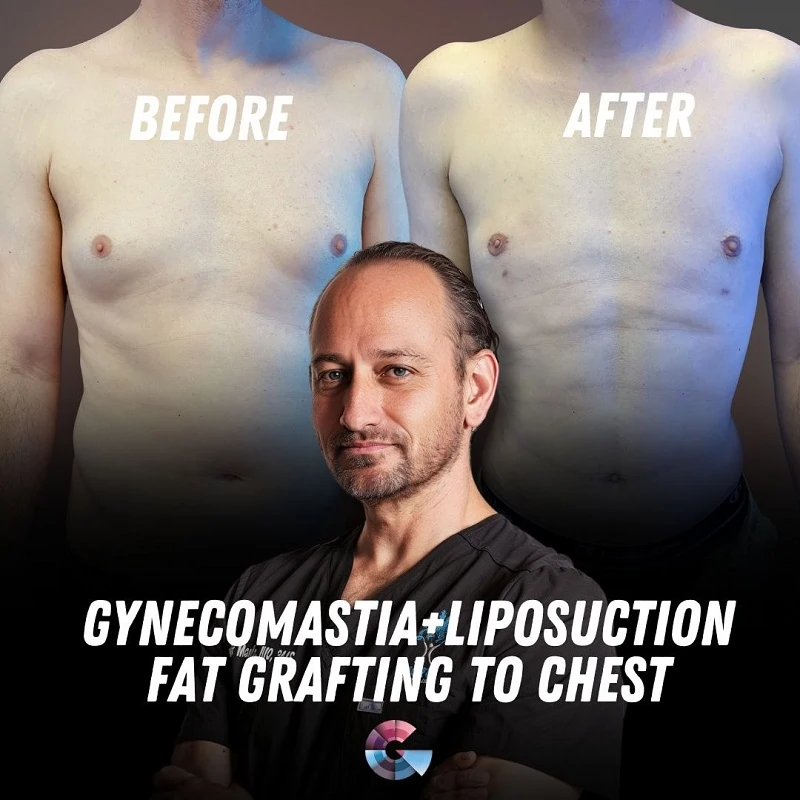
At GynecomastiaLA we specialize in male breast disorders and offer an integrated workup for nipple pain:
Rapid pathways for suspicious lesions (timely mammography/biopsy and oncologic referral).
In-clinic diagnostic ultrasound and same-day imaging coordination.
Hormonal evaluation and coordination with endocrinology when indicated.
Medical and surgical options for gynecomastia (VASER liposuction, power-assisted liposuction, open gland excision, and revisional procedures).
Incision-sparing approaches where appropriate and individualized plans for complex or post-bariatric patients.
Nipple Pain in Men: Summary
Nipple pain in men has many possible causes, most of which are benign and treatable, but some require prompt attention. A careful history and physical examination, targeted imaging, and selective laboratory tests identify the cause in the majority of cases. If you notice persistent, unilateral, or worrisome nipple changes (bleeding, crusting, discharge, or a fixed lump), seek prompt evaluation.
Dr. Babak Moein is a Los Angeles–based surgeon who specializes in gynecomastia and complex chest contouring, offering advanced, anatomy-preserving surgical techniques. His multidisciplinary practice emphasizes thorough diagnostic workups and individualized treatment plans designed to deliver natural, durable results.
If you’re in the Los Angeles area and concerned about nipple pain, our team can provide a focused evaluation and a personalized plan. Booking information is available on our contact page and by phone.
Error connecting to OpenAI API.
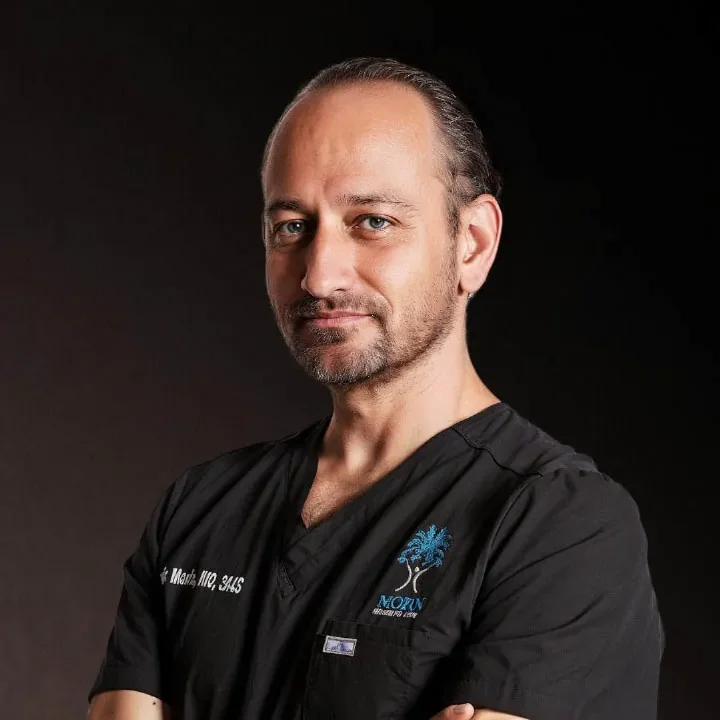
Dr.Babak Moeinolmolki
LA Cosmetic Surgeon Dr. Moein is board-certified by the American Board of General Surgery.

